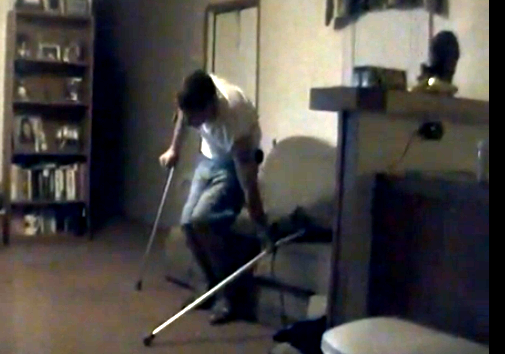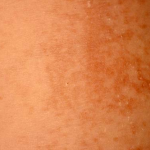Paraparesis is a neurological disorder, which causes weakness of muscles or partial paralysis of tissue especially those in lower limbs. There are different causes of this condition including hereditary and infection. Although there is no cure for the condition, its symptoms can be managed with use of different therapies such as physical therapy and medication to reduce spasticity.

Hereditary spastic paraparesis
Hereditary spastic paraparesis is one form of paraparesis that affects both males and females and can occur at any age. Familial or hereditary paraparesis is characterized by progressive degeneration of nerves. The children of parents with familial spastic paraparesis have 50 percent chance of suffering the condition. The disorder causes complications and degeneration of nerve pathways, which are responsible for transmitting signals from brain down through the spine to the muscle.
Symptoms of hereditary spastic paraparesis
The condition may affect more than one area of the spinal cord. Familial paraparesis causes muscle spasm or spastic weakness in legs. People with the condition have increased reflexes, spasms, and cramps, which make walking to be difficult. Shortening of legs may occur due to muscle spasticity. A patient with this condition experiences exaggerated reflexes, muscle cramps, twitches, and jerky movement.
There is reduced muscle strength, weakness, clumsiness of hands, arm weakness, and exercise intolerance. The movement of legs becomes jerky and stiff. People with this condition tend to stumble or trip since they walk on tiptoes and the feet is turned inward. The shoes wear on the area of the big toe because of change in walking using toes.
Besides, a patient is fatigued, and the muscles in arms may be weakened. The symptoms become progressive and they slowly worsen. The life span of a person with the condition may not be affected. The symptoms can level off after the adolescence stage meaning that they may not advance further. Other abnormalities may be associated with this condition for example; about 10 percent of people with familial spastic paraparesis may suffer from brain, spinal cord and nerve damage. Such people may experience lack of control in muscle movement, dementia, intellectual disability, and heating loss.
Tropical spastic paraparesis
Tropical spastic paraparesis is another form of paraparesis condition. This condition is associated with an infection by the human T-cell lymphotrophic virus type 1or the HTLV-1. Tropical spastic paraparesis is caused by an infection by human t cell-lymphotropic virus, which affects the spinal cord causing nerve damage. This HTLV-1 retrovirus causes most of the tropical spastic paraparesis.
Symptoms of tropical spastic paraparesis
The virus impairs the body immune system resulting to neurological problems. A patient with this condition has symptoms like muscle stiffness, weakness, spasms. The legs gradually start becoming weak and the weakness progresses with time. There is loss of sensation accompanied by pins and needles. Urinary dysfunction occurs leading to urinary frequency.
At other times, bowel dysfunction may also manifest. Back pain that radiates to the legs is also another symptom of the condition. Dermatitis, psoriasis and erectile dysfunction may also present. Signs of the condition are hyperreflexia of lower limps and at times, the upper limbs. The lower limbs have proximal muscle weakness. There is reduced sensation to touch and pinprick. The spinal cord damage may cause loss of sensory.
In rare cases, a patient may experience inflammation of eye’s uveal tract, a condition known as uveitis. Arthritis may also occur in one or several joints. The lungs may also become inflamed in a condition known as pulmonary lymphocytic alveolitis. Moreover, inflammation of muscles or polymyositis may also be experienced. Other symptoms include persistent dryness of conjunctiva and cornea of the eyes.
The skin may also be affected with infectious dermatitis. These complications may occur due to suppressed immune system in body. There are also serious complications associated with the condition such as development of lymphoma or adult T-cell leukaemia. The nervous system may also be affected but in small levels. Many people may not show symptoms in their lives from the HTLV-1 virus. Many of the paraparesis symptoms may appear after decades following the infection with the virus.
Treatment of paraparesis
Treatment of paraparesis depends largely on the type of the condition, the cause, and symptoms experienced by a patient. In treating familial spastic paraparesis, physical therapy may help improve mobility and strengthen muscles. Exercises and physical therapy also improves the range of motion and endurance. It also reduces fatigue and minimises spasms and cramps.
Drugs such as Baclofen may help in reducing spasticity. Some people with hereditary spastic paraparesis may benefit from use of crutches, cane, and splints and a few may need to use wheelchair. Other drugs used in treating symptoms of hereditary spastic paraparesis are diazepam, dantrolene, clonazepam, tizanidine, and botulinum toxin.
Tropical spastic paraparesis or HAM/TSP has no established treatment method but drugs such as corticosteroids can help relieve the symptoms. However, the use of corticosteroids may not change the progression of the disorder. Interferon alpha and beta may help improve the condition. Spastic and stiff muscles may be treated using tizanidine or lioresal.
Oxybutynin drug is used in treating urinary dysfunction caused by the condition. HAM/TSP or tropical spastic paraparesis is a progressive disorder though it is rarely fatal. Patients with paraparesis require routine medical attention where neurological examinations are done to monitor the progression of the condition.

